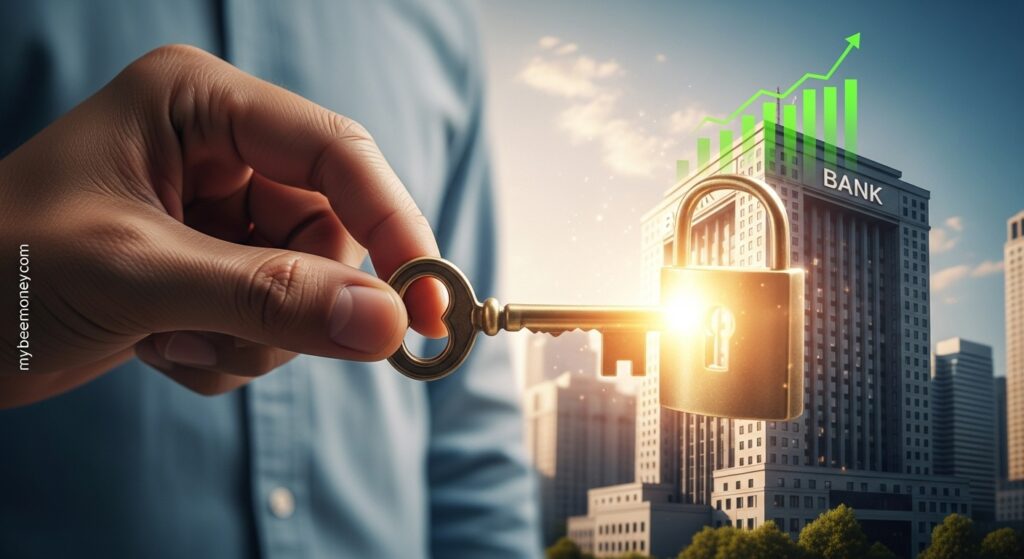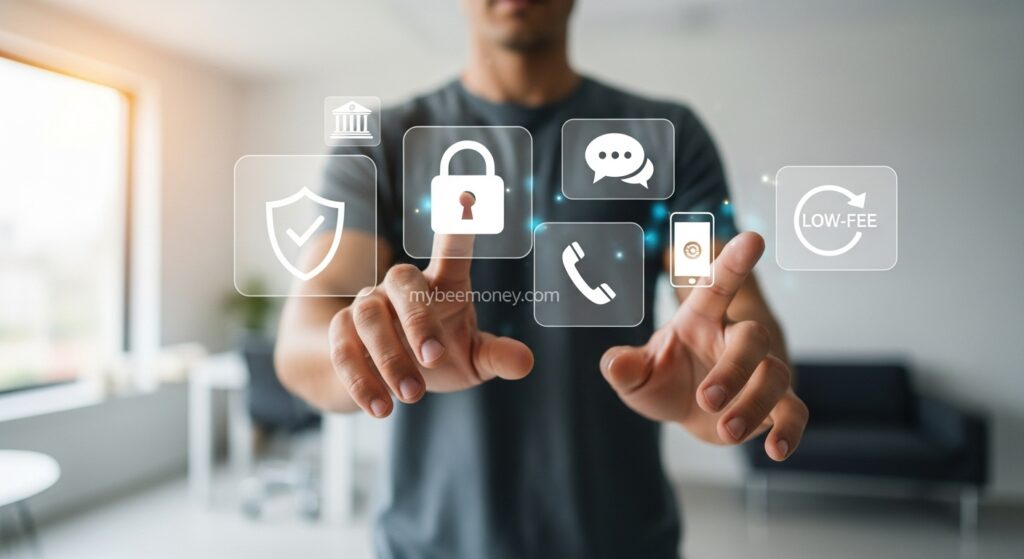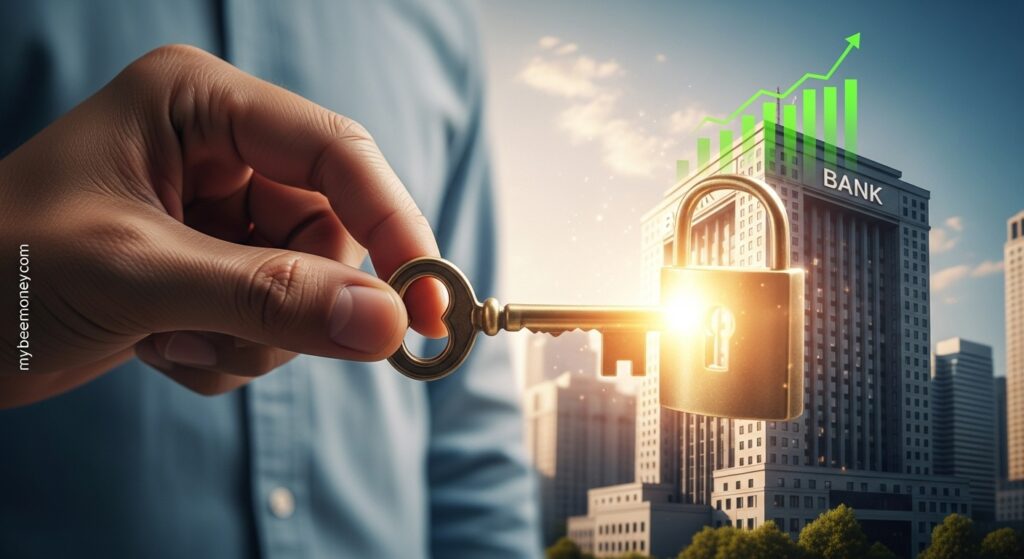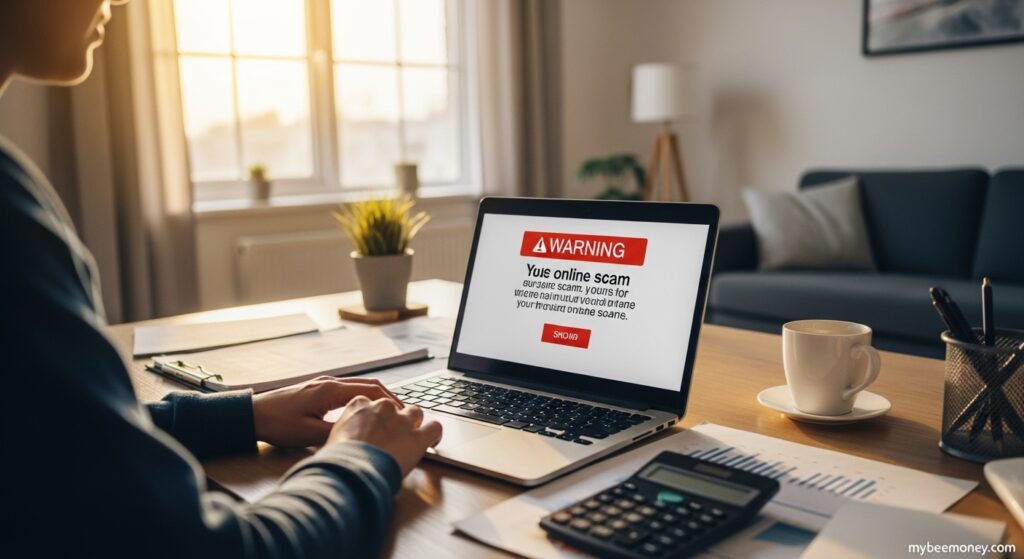
Ever felt overwhelmed by all the bank options out there? Choosing the right bank can seem like a huge decision, especially when you’re just starting your financial journey. But trust me, it’s a key step to unlocking your financial future.
I get it – it’s confusing! That’s why I’m here to help. I’ll walk you through exactly how to choose a bank that’s right for you, making the process simple and stress-free. Let’s find your perfect fit!
Why Your Bank Choice Matters
Choosing a bank might seem like a simple task, but I’ve learned firsthand that it’s a decision with significant ripple effects on your everyday financial life. It’s not just about where you keep your money; it’s about how you manage it and what opportunities you have.
The right bank can make your financial journey smooth and stress-free, while the wrong one can lead to unnecessary headaches and costs. Let’s dive into why this choice truly makes a difference.
More Than Just a Place for Money
When I think about my bank, I realize it’s much more than a digital vault for my cash. It’s the hub where my paycheck lands, where I pay my bills, and where I save for future goals.
Your bank provides the essential tools for managing your daily finances, from direct deposit to online bill pay. It really impacts how easily you can access your funds and handle transactions.
Avoid Hidden Fees and Frustrations
One of the biggest lessons I’ve learned is to watch out for those sneaky fees. Some banks are notorious for charging monthly maintenance fees, ATM fees, or even overdraft fees that can quickly erode your balance.
Doing your homework upfront can save you a lot of frustration and unexpected costs down the line. I always recommend checking their fee schedule closely before committing.
Your Bank as a Financial Partner
Beyond basic accounts, a good bank can truly become a valuable financial partner. They offer services like loans, credit cards, and even guidance on saving or investing.
Finding a bank that aligns with your long-term financial aspirations can provide you with the support and resources you need to grow your wealth and achieve your goals.
Key Features Your Bank Needs

Beyond just a safe place for your money, a bank should be a true financial partner. It’s about finding a place that offers the tools and services you genuinely need to manage your daily finances and plan for the future.
When I started my bank search, I realized it wasn’t just about the name, but about the specific features that would make my financial life easier. Here’s what I consider essential.
Checking and Savings Accounts
These are the fundamental building blocks of your financial life. You need a reliable checking account for everyday transactions and a savings account to stash away funds for future goals.
Look for accounts with low (or no) monthly fees, easy transfer options between accounts, and competitive interest rates on your savings. The goal is to maximize your money, not lose it to unnecessary charges.
ATM Access and Branch Locations
While digital banking is taking over, sometimes you just need cash or in-person assistance. A bank with a strong network of ATMs and conveniently located branches can be a huge plus.
Consider if they have partnerships with other banks for fee-free ATM access, especially if you travel often. Knowing there’s a physical location nearby for complex issues offers great peace of mind.
Online and Mobile Banking Tools
In today’s world, digital banking isn’t a luxury; it’s a necessity. A robust online platform and a user-friendly mobile app are crucial for managing your money on the go.
I look for features like:
- Easy bill pay and transfers
- Mobile check deposit
- Account alerts and notifications
- Strong security measures
Customer Service and Support
No matter how good the technology is, sometimes you just need to talk to a person. Excellent customer service can make or break your banking experience, especially when issues arise.
Check their availability (24/7? Weekends?), the different ways to contact them (phone, chat, email), and their reputation for resolving problems efficiently. A responsive bank truly values its customers.
Explore Bank Types & Find Your Fit
Okay, so you know why choosing the right bank matters and what key features to look for. But here’s another big piece of the puzzle: not all banks are created equal!
They come in various shapes and sizes, each with unique advantages. I’ve learned that understanding these types will help you narrow down your search to find your perfect match.
Traditional Banks vs. Credit Unions
First, consider traditional banks. These are typically for-profit, shareholder-owned institutions. Their goal often prioritizes investor profits.
Conversely, credit unions are not-for-profit and member-owned. Any ‘profits’ are usually returned to members via better rates, lower fees, or improved services. It’s a key difference!
Online-Only Banks and Their Perks
Then there are online-only banks. These operate entirely digitally, without physical branches. This model significantly cuts their operational costs.
This efficiency often passes savings to you! Expect:
- Higher interest rates on savings
- Lower or no monthly fees
- Convenient 24/7 digital access
Community Banks and Local Focus
Finally, don’t overlook community banks. These smaller, locally focused institutions are deeply committed to their communities. They thrive on personal relationships.
You’ll often receive highly personalized service, with bankers understanding local needs. While tech might vary, their local expertise and personal touch are incredibly valuable.
How to Research & Compare Banks
Okay, so you’ve thought about what you need in a bank and explored some general types. Now comes the exciting part: actually digging into the details to find your perfect match. This is where I really roll up my sleeves and get specific.
It’s about comparing apples to apples, but also knowing what kind of apple you prefer! Here’s my go-to process for researching and comparing banks effectively.
Start With Your Banking Needs
Before you even open a new tab, take a moment to confirm your own banking needs. What are your absolute must-haves versus nice-to-haves?
I find it helps to list out my top priorities. Are you focused on low fees, high interest, or perhaps excellent digital tools? This clarity will guide your search.
- What are your non-negotiable features?
- Do you need specific loan products?
- How often will you use ATMs?
Evaluate Fees and Interest Rates
This is a big one! Banks make money in different ways, and often that means fees for you. I always scrutinize monthly maintenance fees, ATM charges, and overdraft fees.
On the flip side, look at interest rates, especially for savings accounts. Even a small difference in the annual percentage yield (APY) can add up over time. Don’t forget to check for minimum balance requirements to avoid fees.
Read Reviews and Check Reputation
Don’t just take a bank’s word for it; see what real customers are saying. I always head to sites like Trustpilot or the Better Business Bureau (BBB) to read reviews.
Look for patterns in the feedback. Is customer service a consistent complaint? A bank’s reputation for responsiveness and problem-solving is incredibly important.
Understand Security and FDIC
Your money’s safety should be paramount. I always confirm that any bank I consider is FDIC-insured. This means your deposits are protected, typically up to $250,000 per depositor.
Beyond that, research their cybersecurity measures. How do they protect your data and transactions? Strong encryption and robust fraud protection are non-negotiable for my peace of mind.
Make Your Final Bank Choice

Alright, you’ve done the heavy lifting! After comparing options and finding a bank that feels like a perfect fit, the next step is to actually make the move. It can seem daunting, but I promise it’s more straightforward than you think.
This final stage is all about getting your new account up and running smoothly. Let’s walk through the practical steps to ensure your transition is seamless and stress-free.
Prepare Necessary Documents
Before you even think about opening an account, gather all the required paperwork. This preparation makes the process much quicker, whether you’re applying online or in person. It’s frustrating to start and then realize you’re missing something vital.
Generally, you’ll need a few key items. I always recommend checking your chosen bank’s website for their specific list, but here’s a common checklist to get you started:
- Government-issued photo ID (e.g., driver’s license, passport)
- Social Security Number (SSN) or ITIN
- Proof of address (e.g., utility bill, lease agreement)
Open Your New Account Smoothly
With your documents ready, you can now open your account. Many banks offer online applications, which are super convenient if you prefer doing things from home. Just fill out the forms and upload your documents.
If you prefer a more personal touch, visit a branch. This is a great opportunity to ask any last-minute questions and meet the staff. Remember to make your initial deposit to activate the account!
Set Up Direct Deposit & Bills
Once your new account is active, the next crucial step is to redirect your income and outgoing payments. I always advise setting up direct deposit for your paycheck first. Just provide your new account and routing numbers to your employer.
Then, update any automatic bill payments or subscriptions. Think about your rent, utilities, streaming services, and loan payments. Don’t close your old account until you’re absolutely sure everything has successfully transferred.
Monitor Your New Bank Account
After everything is set up, don’t just forget about your new account. It’s super important to actively monitor it during the first few weeks and months. This helps catch any forgotten bills or unexpected charges.
Use your bank’s online banking portal or mobile app to check transactions regularly. I find setting up alerts for large transactions or low balances incredibly helpful. This vigilance ensures a truly smooth transition and peace of mind.
ConclusION
Here’s a concise conclusion for your blog post:
So, choosing your bank is totally personal. I hope you now see how important it is to align their services with your financial future, not just pick the first one you see.
Take this info, do some digging, and find your perfect match. Trust me, putting in a little effort now will really pay off down the road.
FAQ: How to Choose a Bank That’s Right for You
What documents do I typically need to open a bank account?
I usually need a valid government-issued ID like a driver’s license, my Social Security number, and proof of address, such as a utility bill.
Are online-only banks a good option for me?
They can be great for lower fees and higher interest rates, but I consider if I’m comfortable managing my finances without physical branch access.
How can I easily compare different banks’ fee structures?
I always look for a “fee schedule” or “disclosure statement” on their website, which clearly lists all potential charges.
What’s FDIC insurance, and why is it important when choosing a bank?
It means my deposits are insured up to $250,000 by the government, which gives me peace of mind about my money’s safety.
What’s the main difference between a traditional bank and a credit union?
Credit unions are member-owned and often offer lower fees and better rates, while traditional banks are for-profit corporations.












